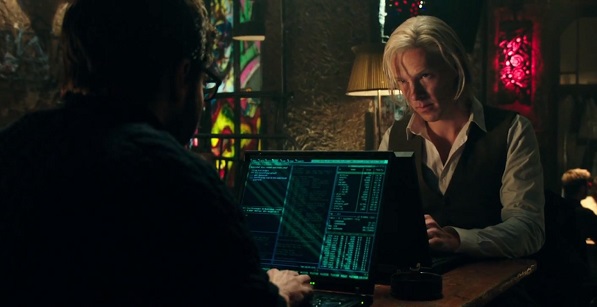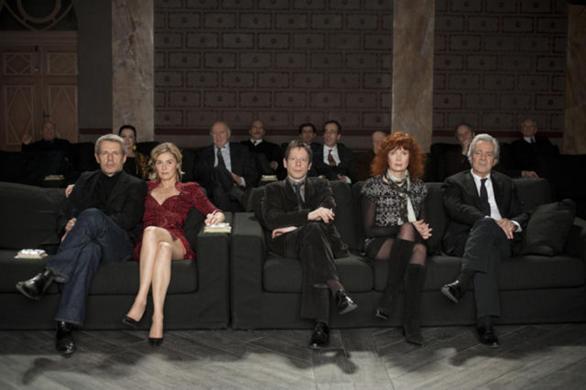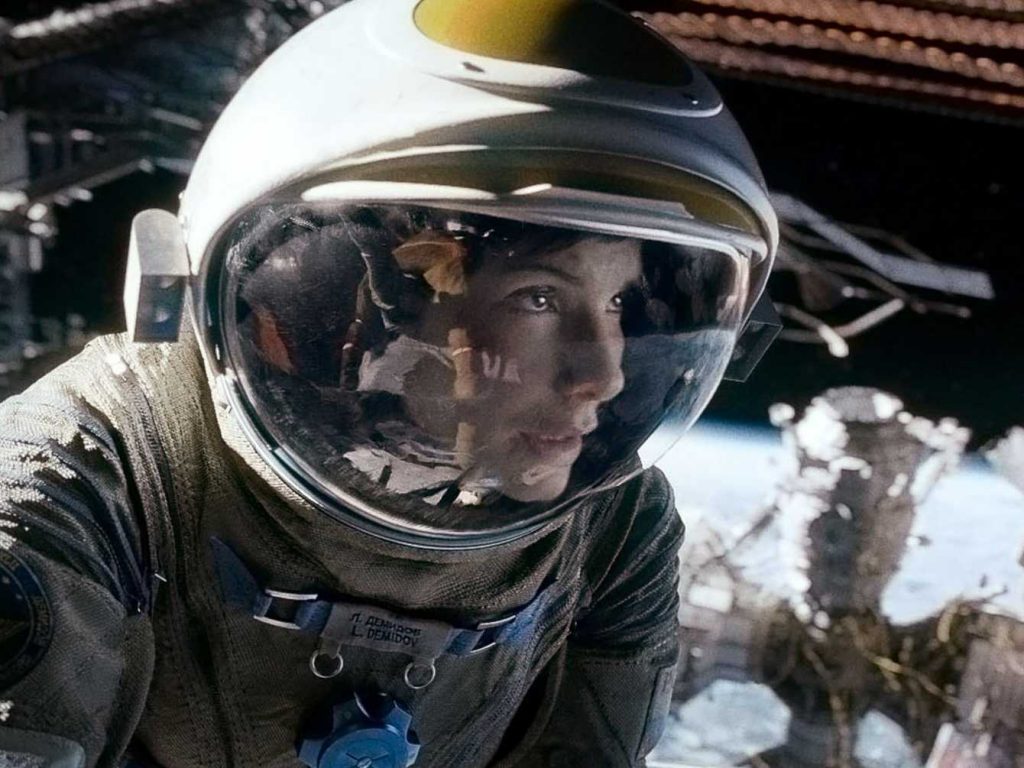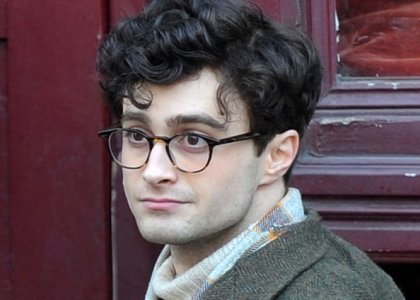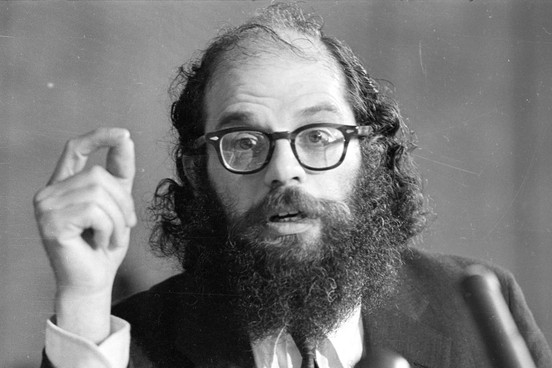“But surely Monsieur Godard,” an exasperated Georges Franju exclaimed,” you must believe that films have a beginning, a middle, and an end!” “Yes,” Godard ever-so memorably replied,” ‘but not necessarily in that order.”
The nouvelle vague auteur wasn’t just being cheeky to the master of the “well-made film.” He was simply underscoring the fact that movies operate in many different levels—often simultaneously and frequently at some remove from standard notions of “plot” and “character.” And by that Godard wasn’t merely referring to style. Film content can be a many-splendored thing. And as the following examples from this year’s crop of “Bests” demonstrate, there’s a conceptual dimension to cinema that can assume many forms and guises.
1. Adolph Eichmann in Hannah Arendt
Margarethe von Trotta’s riveting “biopic” about the noted political historian, the writing of her most famous work Eichmann in Jerusalem and the controversy that followed its publication is arguably the finest film a made to date about a certified intellectual. As with many of von Trotta’s works Barbara Sukowa stars as Arendt, the survivor of Hitler’s wrath who wrote with piercing eloquence about history. Never more so than in Eichmann in Jerusalem, her best-selling study of the trial of Adolph Eichmann, the Nazi commandant who supervised the extermination of millions of people.
While a number of noteworthy professionals are cast as important figures in Arendt’s life at that time (most notably Janet McTeer as her loyal friend novelist Mary McCarthy) von Trotta takes the easy way out when it comes to the film’s other major character, Adolph Eichmann. For rather than simply cast Ben Kingsley, she uses the trial footage of the actual Adolph Eichmann. In this way we can see what Arendt saw, i.e., not an embodiment of Satan, but rather a dull colorless clerk devoid of personality and passion. Thus he’s living proof of Arendt’s thesis: “The Banality of Evil.” It would have been so much more reassuring to see a living devil rather than this shallow little man. And that’s the whole point of her book and the film von Trotta has made about it
2. You Ain’t Seen Nothing Yet : Resnais and Not Resnais
As everyone who has paid so much as the slightest attention to his recent work knows Alain Resnais loves actors. And by that I most specifically mean Sabine Azema, Pierre Arditi, and Lambert Wilson. These Resnais regulars are on view along with such seasoned talents as Michel Piccoli, Mathieu Almaric, and Anny Duperey in this very curious adaptation of two Jean Anouilh plays Eurydice and Cher Antoine ou l’amour rate in which a famous playwright summons his favorite actors to advice a new production of a play they’ve all appeared in. They’re shown a film by an acting troupe “La Compagnie de la Colombe” in which they explain their plans. What’s curious about this film-within-a-film is that it wasn’t directed by Resnais at all, but by this acting troupe. It’s quite free-form and strange. That a filmmaker as meticulous as Resnais should give even so much of an inch of mise-en-scène to another party demonstrates that after seventy-seven years of filmmaking this old master is still open to trying new things
3. Much Ado About Nothing: Modern dress, black and white, and a deliciously al fresco locale
Nerd king Joss Whedon (The Avengers, Angel, Firefly, Dr. Horrible’s Sing-Along Blog and above all the ineffable Buffy The Vampire Slayer) has a soft spot for the Bard of Avon. And unaccountably this master of pop culture has a positively Lubitsch-like touch with this modern dress version of Shakespeare’s most popular comedy. Directing a crew of actors seasoned in Whedon (Alexis Denisof, Amy Acker, Clark Gregg, Nathan Fillion among them) he has managed to render unto Shakespeare the thing least associated with Shakespeare—the fact that he was a popular crowd-pleaser, not a trampoline for academics. There’s plenty to laugh at here—from verbal sparring to perfectly timed pratfalls. And what makes it work so smoothly is the elegant black-and-white cinematography and the use of a real Los Angeles house and garden, neither ostentatious nor “funky.” As a result Shakespeare sings—and sometimes even dances (as this trailer demonstrates.)
4. Her: Scarlett Johansson’s Voice
There’s much to like about Spike Jonze’s first original screenplay. (His other films were adaptations of Charlie Kaufman and Maurice Sendak). Joaquin Phonenix is at his most relaxed and sane as a writer for a company that composes “personal” letters and cards for you to send to loved ones in fake “handwritten” form. Recovering from a divorce, he acquires an “Operating System” device—a computer in constant contact with you through a plug you insert in your ear. And what you hear though this plug are the dulcet tones of Scarlett Johansson. No wonder Phoenix falls madly (in every sense of the term) in love with her. And kudos to Jonze for realizing that the lovely Scarlett need not be seen to overwhelm.
5. Gravity: 3-D
Back in the 1950s 3-D was a gimmick designed to lure audiences into theaters and away from television; it required not only special glasses but multiple projectors. Intermissions were required to change reels. In short, one had to go through a lot of trouble to enjoy the likes of Sangaree (1953) Now 3-D is back, bigger, better and far less complicated for theaters to deal with. Alfonso Cuarón’s smash hit is a simple “lady in distress” story comparable to the last reel of Alien—minus the monster. What makes it work is the fact that outer space is the ideal setting for 3-D imagery. As Sandra Bullock’s body floats amid wreckage, the spectator’s eye travels over a celestial landscape rich with depth—and awe.
6. The Happy Sad: Bi-Curiosity
Though it’s adapted from a play (by Ken Urban) there’s nothing “stagey” about Rodney Evans’ highly sophisticated romantic comedy about how two couples become intertwined. One is black, male and gay (LeRoy McClain and Charlie Barnett) the other is white, male-female and nominally straight (Cameron Scoggins and Sorel Carradine). Both are interested in experimenting with an “open relationship.” And for the white couple this means being what’s come to be known as “Bi-Curious.” Needless to say nothing works out as planned—if indeed there was a plan. However, sadder-but-wiser proves a good place to be as Evans and his highly talented cast explore sexuality without recourse to sniggering or sensationalism. For once sex is a “special effect” of enormous power.
7. The Fifth Estate: The night club headquarters
That Bill Condon’s expertly directed ripped-from-today’s-headlines thriller proved to be one of 2013’s biggest box office busts is rather astonishing. It moves at today’s requisite breakneck clip, is all about modern technology and stars the unavoidably omnipresent Benedict Cumberbatch as Wikileaks guru Julian Assange. Maybe Assange is a turn-off to the mass movie-going public. Maybe he story’s too fresh for the mass market. Whatever the reason moviegoers missed a good bet with this one, especially for the scenes where Assange and his erstwhile second-in-command Daniel Bruhl (Daniel Berg) repair to the corner of a crowded noisy night club the better to work while hiding in plain sight. Nothing crystalizes the contemporary condition more succinctly.
8. Kill Your Darlings: Daniel Radcliffe’s glasses
How do you play Allen Ginsberg before he became Allen Ginsberg? You simply trust your instincts as the brilliant Daniel Radcliffe does in Kill Your Darlings, John Krokidas’s brilliant “origin story” for super anti-heroes. As the young man who would be the Beat Generation’s signal poet Radcliffe is all late-adolescent fervor in a pair of glasses…
…signaling the adult Allen’s eventual emergence.
Can we say “special effect” boys and girls?
9. The Grandmaster: Morricone’s love theme from Once Upon a Time in America
While the primary score for Wong Kar-wai’s epic biopic of martial arts expert Ip Man (Tony Leung Chiu-Wai) is composed by Nathaniel Mechaly and Shigeru Umebayashi, at one emotionally pivotal point in the action Ennio Morricone’s love theme from Sergio Leone’s gangster epic Once upon A Time in America suddenly break forth on the soundtrack. As Wong has frequently used such diverse music sources as Frank Zappa, Astor Piazzolla, Otis Redding and Nat King Cole in his films this “sampling” isn’t in and of itself remarkable. What makes it stand out is the way Wong has paired the aching nostalgia of Leone’s dream-like crime saga with the similarly tender feelings he has for a martial arts adept who while estranged from his own family due to war and strife finds a way to communicate with the entire world through the action choreography he creates for the movies.
10. Twenty Feet From Stardom : Darlene Love
The star of Morgan Neville’s documentary are the women who served other stars. Doris Troy, Patti Austin, and Merry Clayton were the “back-up singer’ for The Rolling Stones, David Bowie, Bette Midler, Stevie Wonder and a host of others. The film is designed to give them their due. But right at its heart is one “back-up” singer who IS every inch a star. And here’s why:
(Darlene Love: “Christmas Baby Please Come Home”)
For the complete list of year-end lists on Keyframe, go to The Year in Film: 2013.
For the complete index of the films on these lists, go to 2013 Year in Review: Indexed.

